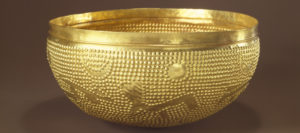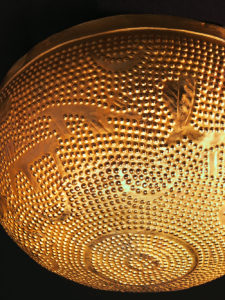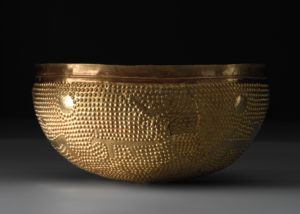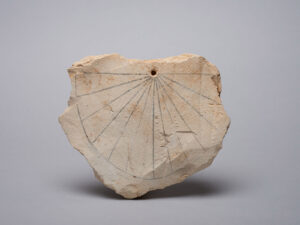
The gold-digger of Altstetten
At the construction site, life is hard. Except if you discover a treasure, as it happened in Zurich-Altstetten in 1906.
In the canton of Zurich, one would not expect to find gold anywhere except on the “Goldcoast” and on Paradeplatz. The labourer who was working on the railway line in Altstetten in 1906 must have thought he was dreaming when he spied a glint of gold among the dirt. What he had unearthed was a richly decorated golden bowl that turned out to be a highly significant artefact from the Bronze Age: a precious vessel that had lain in the earth’s protective embrace for around 3000 years.
The bowl is adorned with suns, full moons, and sickle moons. Even the lustre of the precious metal symbolises the heavenly bodies. The people of the Bronze Age used the stars to find their way and could read the change of the seasons in their movements. They were aware of the influence of the sun and moon on crops and fruits and adopted them as symbols in the rituals they performed.


Golden bowl, 12th-10th century BC, found in 1906 in Zurich-Altstetten. Photo: Swiss National Museum



